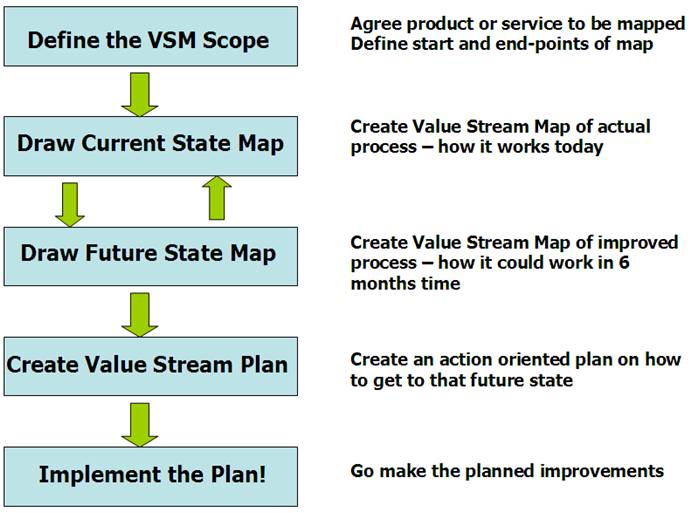


Every director or CEO wants to know how to implement process improvement, and Lean is the answer. Lean techniques are all about giving customers the greatest value for the least amount of resources, so if you’re looking for ways to do more with less, then read on to learn how process improvement with Lean actually works.
Many organizations think Lean is perfect only for manufacturing applications, but the truth is that it applies to every single business that wants to improve the value it provides for customers. Lean is more than just a tactic or a program. It’s an entire way of life. Here are the basic steps involved in process improvement through Lean.
By utilizing Lean thinking, you’ll uncover ways to deliver value that you never realized before. Just imagine what it was like to be one of the early internet explorers who realized that goods could be sold online. Suddenly it became possible to offer an enormous level of value to customers with very little effort on the part of the company.
Companies that adopt process improvement using Lean practices are able to lower their operational costs while still providing unique value to their customers. After all, nothing should be done if it doesn’t add value. For example, if you can’t add value by reducing the cost of components, then it shouldn’t be done. But there may be other, more creative ways to reduce costs while keeping the value the same or perhaps even improving it. Through creative thinking and problem solving, any business can get ahead of its competitors. That’s what process improvement with Lean is all about.
Original Link: Unlocking the Power of Process Improvement with Lean
Source: Leading Edge: Leading Edge Group
Comments Off on Unlocking the Power of Process Improvement with Lean
Although Lean education is considered by some to be an important component of training in the automotive industry, it should be a part of every company’s employee training, no matter which industry they are in. The Lean way of thinking is all about looking at the entire value stream and asking how more value can be added as quickly as possible. In short, it’s all about giving more value to your customers in terms of product and service without having to compromise on resources.
The reason Lean thinking is so important is because it addresses the perspectives of the customers, individuals, and the business or organization itself. By looking at things from all three perspectives, you can add value in unique ways so that everyone wins in the process. After all, value is about more than just the mass production process. It’s about every piece within that process which brings about the desired result.
Of course sometimes the three perspectives addressed in Lean thinking do conflict. If these conflicts are not handled effectively, then it leads to waste. In the world of Lean thinking, the conflicts created by competing perspectives are addressed in a way that avoids waste and improves the entire process.
Here are several components of Lean education every employer or organization would do well to incorporate into personnel training:
Lean education has been taking the business, industry and public sector world by storm and it’s easy to see why. There are numerous components that are applicable not just to the manufacturing industry, but to every type of business or organization that exists.
Let the Lean education experts at the Leading Edge Group show your employees how to become problem solvers. As the 2009 recipient of the Aramark Healthcare Innovation Award for Healthcare Technology or Products Innovation, we are at the cutting edge of Lean education. We understand that all of your small successes and achievements build momentum for change. The real power of your endeavors lies in your people, and by offering them Lean education, you can build a staff of problem solvers who excel in everything they do.
– Original article: www.leadingedgegroup.com/blog/the-value-of-lean-education
It is important for every organization to recognize its current position or state before embracing the concept and principles of Lean Thinking. Value stream mapping (VSM) is a core tool of Lean and is invaluable in conducting bottom-up studies while concurrently progressing up to the higher-level organizational systems that support these.
While Lean is effectively a business philosophy dedicated to the elimination of waste and built on five major principles: customer value (focus), value analysis, flow, pull and the pursuit of perfection, VSM provides the techniques required to document and improve the entire system, including both information and material flows. This combined approach can be applied to almost any supply chain, manufacturing or administrative process and is most effective when carried out throughout the entire organization.
VSM enables an organization to understand its current supply chain process. VSM visually maps what the company is currently doing and achieving (as opposed to what the organization thinks it is achieving) and from that map the company can create a future state map or vision, this end-to-end process shows the company how to operate in order to achieve the most benefits. This map of activities and information-flow provides a framework and impetus for implementing Lean.
The steps in implementing VSM:

This article was provided by Leading Edge Group